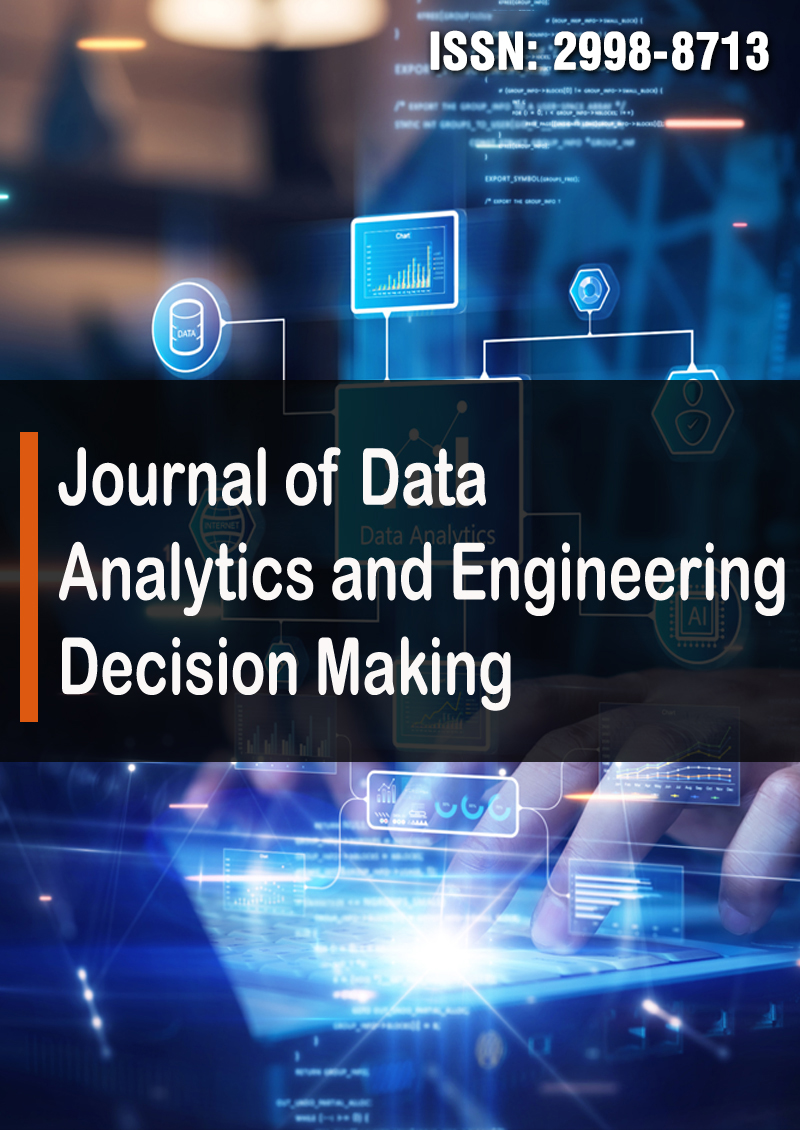Author Guidelines
Journal DOI: 10.33140/JDAEDM
The Journal of Data Analytics and Engineering Decision Making is an international peer- reviewed publication committed to fostering excellence in research, education, and application in the domains of data analytics and engineering decision-making. We invite contributions from researchers, educators, and practitioners dedicated to advancing understanding and innovation in the intersection of data analytics and engineering disciplines.
Topics of Interest: We particularly invite high-quality original research that contributes to the advancement of knowledge in the following key areas:
- Data Analytics Techniques for Structural Engineering
- Data-Driven Solutions in Transportation Engineering
- Geotechnical Engineering Applications of Data Analytics
- Environmental Engineering and Data-Driven Decision Making
- Data Analytics in Construction Management
- Data-Driven Approaches to Project Management
- Infrastructure Development and Data Analytics
- Sustainable Engineering Practices Enhanced by Data Analytics
Plagiarism Policy: Manuscript duplicity, including plagiarism, is strictly prohibited. Figures and tables extracted from any sources must be cited properly. The journal does not condone the exact reproduction of any content without proper citation.
Article Publication Charges (APCs): Article Publication Charges for the Journal of Data Analytics and Engineering Decision Making are $2519 payable upon acceptance of each paper. Fee waivers may be available in certain circumstances. Please contact the managing editor for more information or to request a fee waiver.
Types of Submissions:
We publish a variety of original articles, including:
- Research Papers
- Reviews
- Case Studies
- Short Reports
- Abstracts
- Editorials
- Letters to the Editor
- Commentaries
- Rapid Communications
- Perspectives
- Conference Proceedings
Manuscript Classification: Upon submission, authors are encouraged to request a particular classification for their manuscript. However, the final classification is determined by the editor and associate editor. The chosen classification will appear in the printed manuscript above the manuscript title.
Cover Letter Requirement: Authors must prepare and submit a cover letter with their manuscript.
Manuscript Formatting Guidelines
1. Manuscript Title:
- The title should be limited to 25 words or less and should not contain abbreviations.
- It should be a brief phrase describing the contents of the paper.
2. Author Information:
- Provide complete names and affiliations of all authors, including contact details of the corresponding author (Telephone, Fax, and E-mail address).
3. Abstract:
- The abstract should be informative and self-explanatory, summarizing the topic, scope of experiments, significant data, major findings, and conclusions.
- Limit the abstract to 300 words or less.
- Use standard nomenclature and avoid abbreviations.
- Include keywords (3-10) and abbreviations after the abstract.
4. Text Introduction:
- Set the tone of the paper by providing a clear statement of the study, relevant literature, and proposed approach or solution.
- Attract readers' attention from a broad range of scientific disciplines.
5. Materials and Methods:
- Provide a complete overview of the study design.
- Include detailed descriptions of materials, participants, comparisons, interventions, and types of analysis.
- Describe only new procedures in detail; cite previously published procedures and mention important modifications briefly.
- Capitalize trade names and include the manufacturer’s name and address.
6. Results:
- Provide complete details of the experiment to support the study's conclusion.
- Write the results in the past tense for the authors' experiments and in the present tense for previously published findings.
- Combine or maintain results and discussion in separate sections.
- Avoid speculation and detailed interpretation of data in the results section.
7. Acknowledgment:
- Include acknowledgments of people, grants, funds, etc.
8. References:
- Include only published or accepted manuscripts in the reference list.
- Do not cite meeting abstracts, conference talks, or papers submitted but not yet accepted.
- Provide at least one online link for each reference.
9. Copyright Submission:
- Submission of a manuscript implies that the work described has not been published before (except as an abstract or as part of a published lecture or thesis) and is not under consideration for publication elsewhere.
10 Creative Commons Attribution License:
- All works published in the Journal of Data Analytics and Engineering Decision Making are under the terms of the Creative Commons Attribution License, allowing copying, distribution, transmission, and adaptation provided the original work and sources are appropriately cited.



